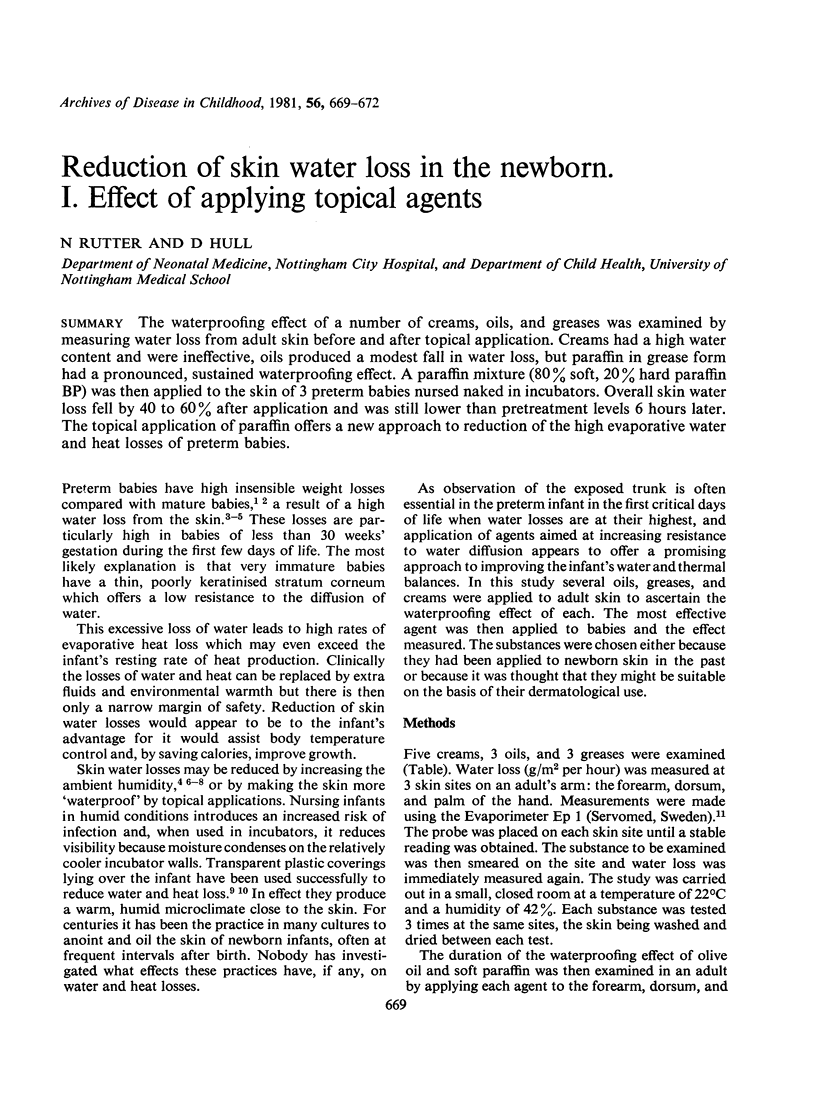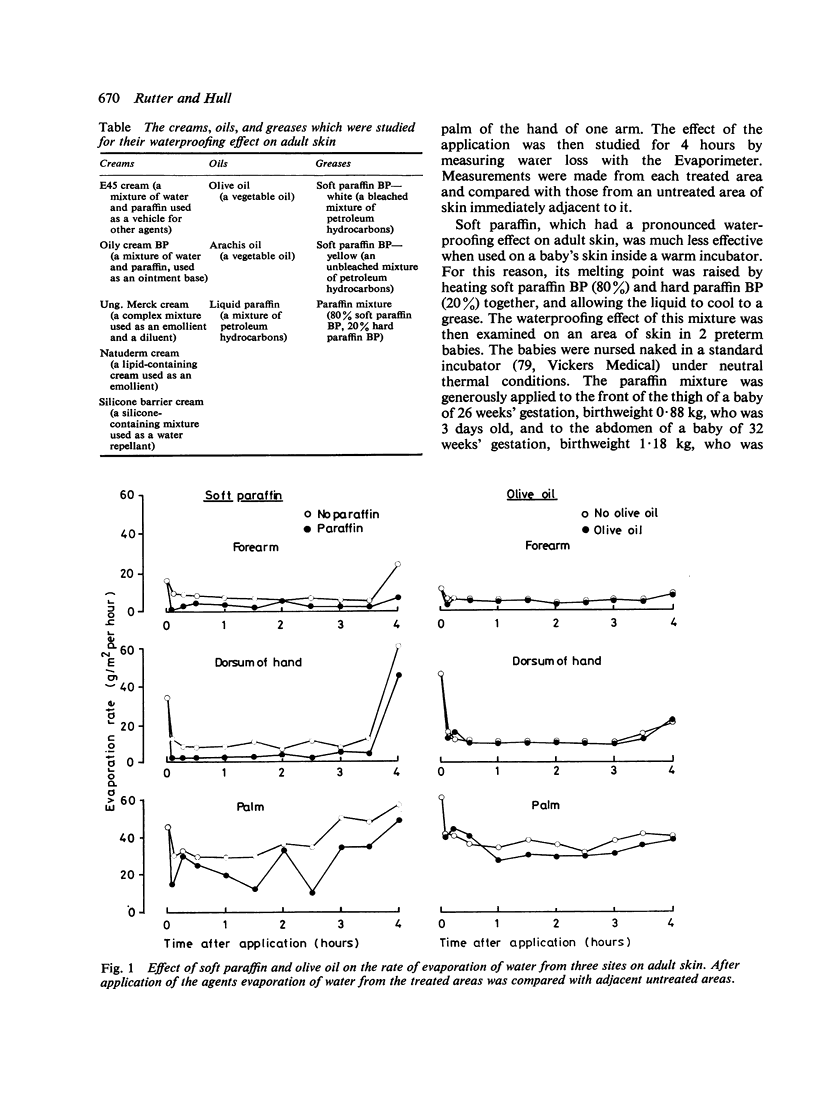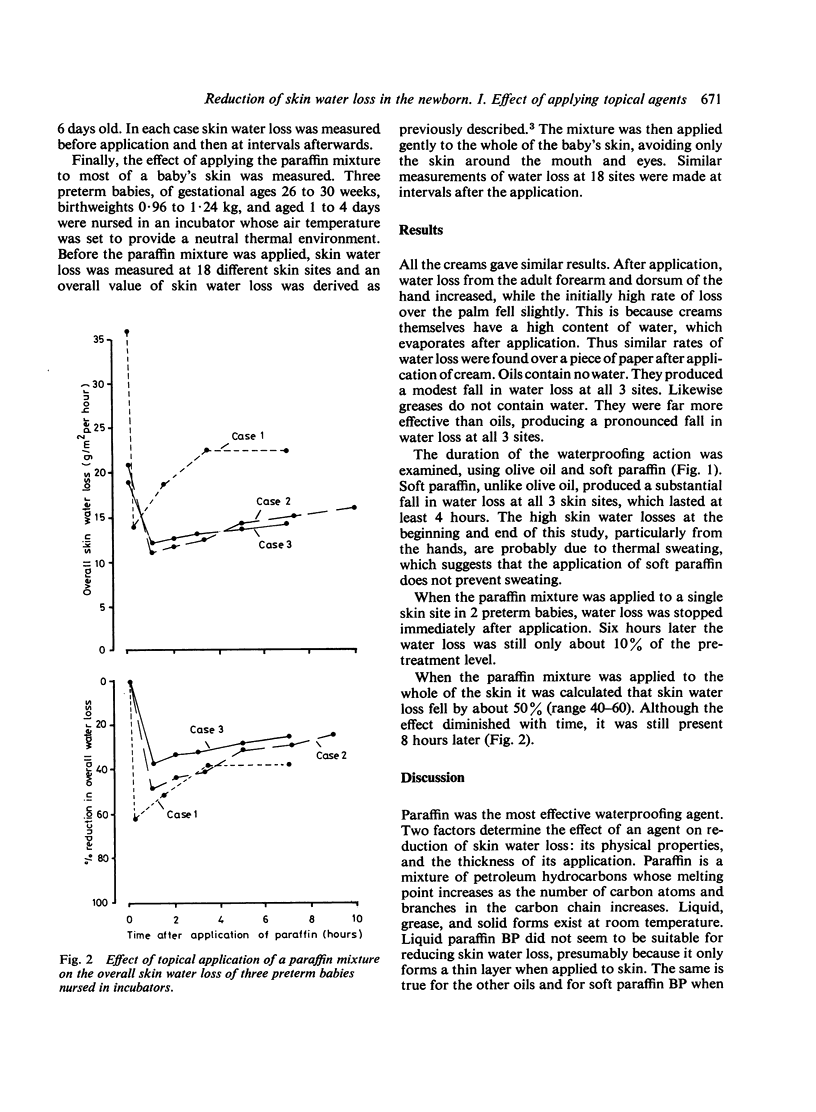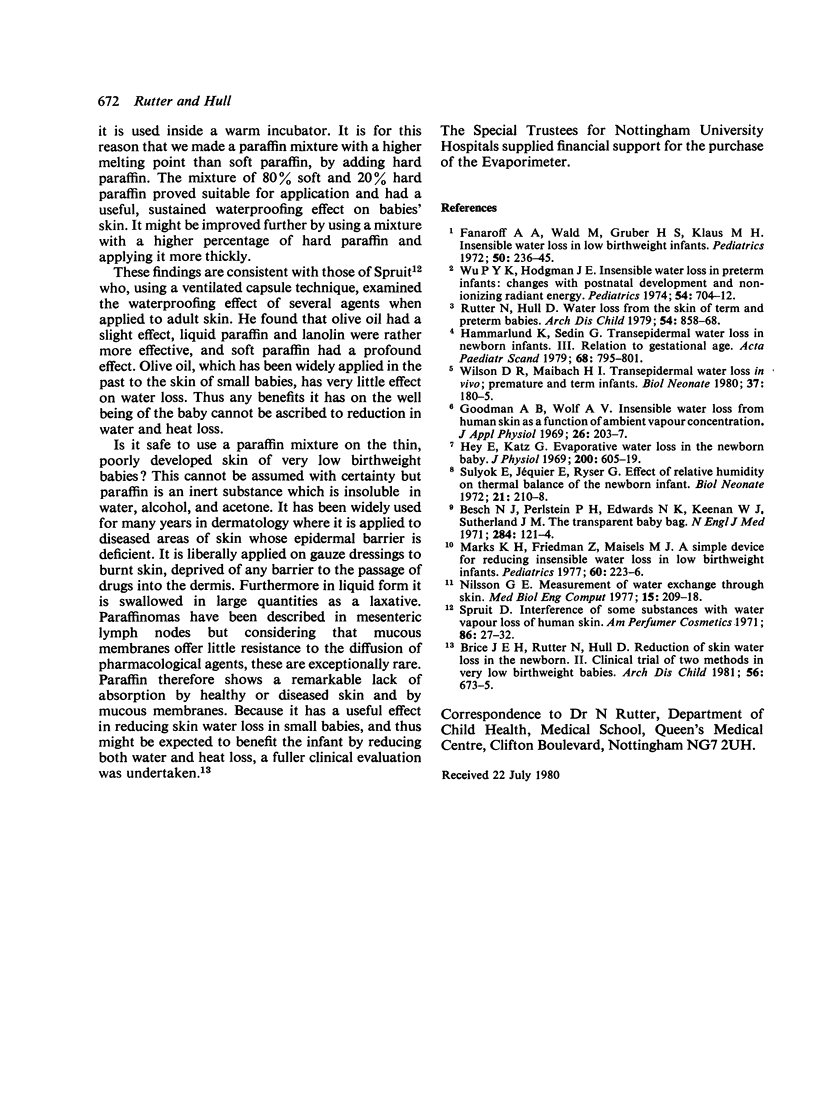Abstract
The waterproofing effect of a number of creams, oils, and greases was examined by measuring water loss from adult skin before and after topical application. Creams had a high water content and were ineffective, oils produced a modest fall in water loss, but paraffin in grease form had a pronounced, sustained waterproofing effect. A paraffin mixture (80% soft, 20% hard paraffin (BP) was then applied to the skin of 3 preterm babies nursed naked in incubators. Overall skin water loss fell by 40 to 60% after application and was still lower than pretreatment levels 6 hours later. The topical application of paraffin offers a new approach to reduction of the high evaporative water and heat losses of preterm babies.
Full text
PDF



Selected References
These references are in PubMed. This may not be the complete list of references from this article.
- Besch N. J., Perlstein P. H., Edwards N. K., Keenan W. J., Sutherland J. M. The transparent baby bag. A shield against heat loss. N Engl J Med. 1971 Jan 21;284(3):121–124. doi: 10.1056/NEJM197101212840302. [DOI] [PubMed] [Google Scholar]
- Brice J. E., Rutter N., Hull D. Reduction of skin water loss in the newborn. II. Clinical trial of two methods in very low birthweight babies. Arch Dis Child. 1981 Sep;56(9):673–675. doi: 10.1136/adc.56.9.673. [DOI] [PMC free article] [PubMed] [Google Scholar]
- Fanaroff A. A., Wald M., Gruber H. S., Klaus M. H. Insensible water loss in low birth weight infants. Pediatrics. 1972 Aug;50(2):236–245. [PubMed] [Google Scholar]
- Goodman A. B., Wolf A. V. Insensible water loss from human skin as a function of ambient vapor concentration. J Appl Physiol. 1969 Feb;26(2):203–207. doi: 10.1152/jappl.1969.26.2.203. [DOI] [PubMed] [Google Scholar]
- Hammarlund K., Sedin G. Transepidermal water loss in newborn infants. III. Relation to gestational age. Acta Paediatr Scand. 1979 Nov;68(6):795–801. doi: 10.1111/j.1651-2227.1979.tb08214.x. [DOI] [PubMed] [Google Scholar]
- Hey E. N., Katz G. Evaporative water loss in the new-born baby. J Physiol. 1969 Feb;200(3):605–619. doi: 10.1113/jphysiol.1969.sp008711. [DOI] [PMC free article] [PubMed] [Google Scholar]
- Marks K. H., Friedman Z., Maisels M. J. A simple device for reducing insensible water loss in low-birth-weight infants. Pediatrics. 1977 Aug;60(2):223–226. [PubMed] [Google Scholar]
- Nilsson G. E. Measurement of water exchange through skin. Med Biol Eng Comput. 1977 May;15(3):209–218. doi: 10.1007/BF02441040. [DOI] [PubMed] [Google Scholar]
- Rutter N., Hull D. Water loss from the skin of term and preterm babies. Arch Dis Child. 1979 Nov;54(11):858–868. doi: 10.1136/adc.54.11.858. [DOI] [PMC free article] [PubMed] [Google Scholar]
- Sulyok E., Jéquier E., Ryser G. Effect of relative humidity on thermal balance of the newborn infant. Biol Neonate. 1972;21(3):210–218. doi: 10.1159/000240509. [DOI] [PubMed] [Google Scholar]
- Wilson D. R., Maibach H. I. Transepidermal water loss in vivo. Premature and term infants. Biol Neonate. 1980;37(3-4):180–185. doi: 10.1159/000241271. [DOI] [PubMed] [Google Scholar]
- Wu P. Y., Hodgman J. E. Insensible water loss in preterm infants: changes with postnatal development and non-ionizing radiant energy. Pediatrics. 1974 Dec;54(6):704–712. [PubMed] [Google Scholar]


